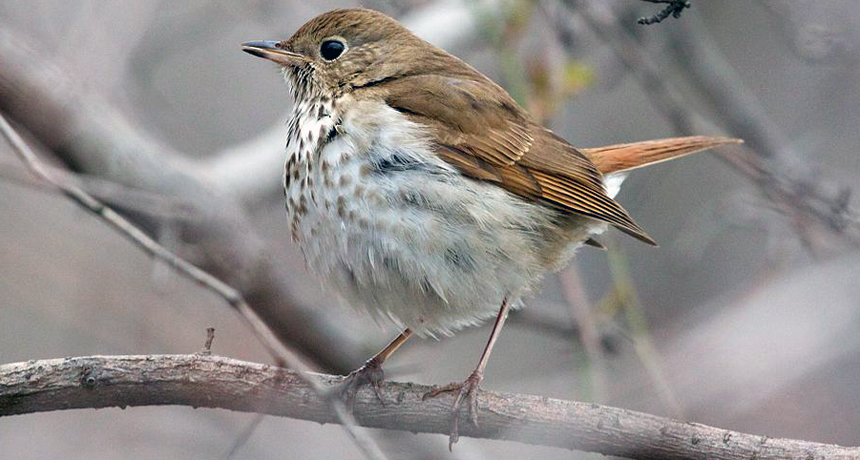Hermit thrushes, humans share some musical basics

A hermit thrush’s slightly melancholy song often includes a set of notes with mathematical relationships rather like notes in common human musical scales.
Matt MacGillivray/Wikimedia Commons (CC BY 2.0)





